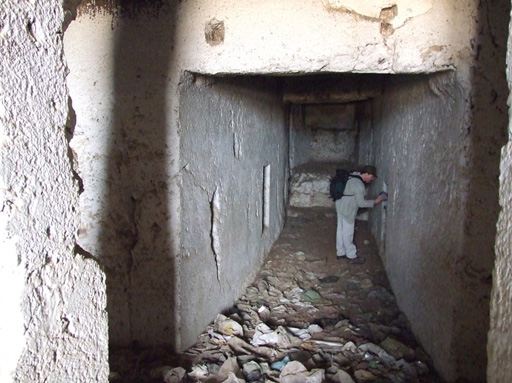
Osmanagich has also received official backing. Foreigners by the thousands have come to see what all the fuss is about, drawn by reports by the BBC, Associated Press, Agence France-Presse and ABC's Nightline (which reported that thermal imaging had "apparently" revealed the presence of man-made, concrete blocks beneath the valley). Nearby eateries serve meals on pyramid-shaped plates and coffee comes with pyramid-emblazoned sugar packets. Souvenir stands peddle pyramid-themed T-shirts, wood carvings, piggy banks, clocks and flip-flops. Over 400,000 people have visited the sites since October 2005, when Osmanagich announced his discovery. Skeptics, who say the pyramid claims are examples of pseudo-archaeology pressed into the service of nationalism, have been shouted down and called anti-Bosnian.

Even Bosnian officials-including a prime minister and two presidents-have embraced them, along with the Sarajevo-based news media and hundreds of thousands of ordinary Bosnians, drawn to the promise of a glorious past and a more prosperous future for their battered country. In a country still recovering from the 1992-95 genocidal war, in which some 100,000 people were killed and 2.2 million were driven from their homes (the majority of them Bosnian Muslims), Osmanagich's claims have found a surprisingly receptive audience. As a group, Osmanagich says, these structures are part of "the greatest pyramidal complex ever built on the face of the earth." During that time much of Europe was under a mile-thick sheet of ice and most of humanity had yet to invent agriculture. All of them, he says, are some 12,000 years old. A third pyramid, he says, is in the nearby hills. Looming above the opposite side of town is the so-called Pyramid of the Sun-also known as Visocica Hill-which, at 720 feet, also dwarfs the Great Pyramids of Egypt. Not just any pyramid, but what Osmanagich calls the Pyramid of the Moon, the world's largest-and oldest-step pyramid. Consequently, you can conclude that the whole thing is a pyramid."


"You find evidence of the stone structure everywhere. "Maybe it's a burial site, and maybe it's an entrance, but I think it's some type of ornament, because this is where the western and northern sides meet," he says, gesturing toward the summit of Pljesevica Hill, 350 feet above us. Osmanagich, a blond, 49-year-old Bosnian who has lived for 16 years in Houston, Texas, has a more colorful explanation. If I'd come upon it in a farmer's backyard here on the edge of Visoko-in Bosnia and Herzegovina, 15 miles northwest of Sarajevo-I would have assumed it to be the foundation of a shed or cottage abandoned by some 19th-century peasant. Sam Osmanagich kneels down next to a low wall, part of a 6-by-10-foot rectangle of fieldstone with an earthen floor.


 0 kommentar(er)
0 kommentar(er)
